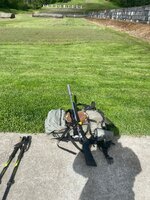Keep in mind that thermal loosening and thermal tightening are a thing. Hand-tight when cold can easily end up with a loose suppressor once the can gets hot and thermally expands to different dimensions inside the threads (it's pretty noticeable when it has happened, when your groups suddenly open up).
And if you crank down on it while it's hot, especially with a lot of carbon in there (much of which is atomized lead and copper, with relatively low melting points compared to the steel), it can cinch down on those threads almost like it's welded, once it cools. I've seen guys misidentify this as "carbon lock" in some instances. Often, just getting it hot by shooting it is enough thermal expansion to unscrew the suppressor again by hand (by glove, suppressor cover, etc).

